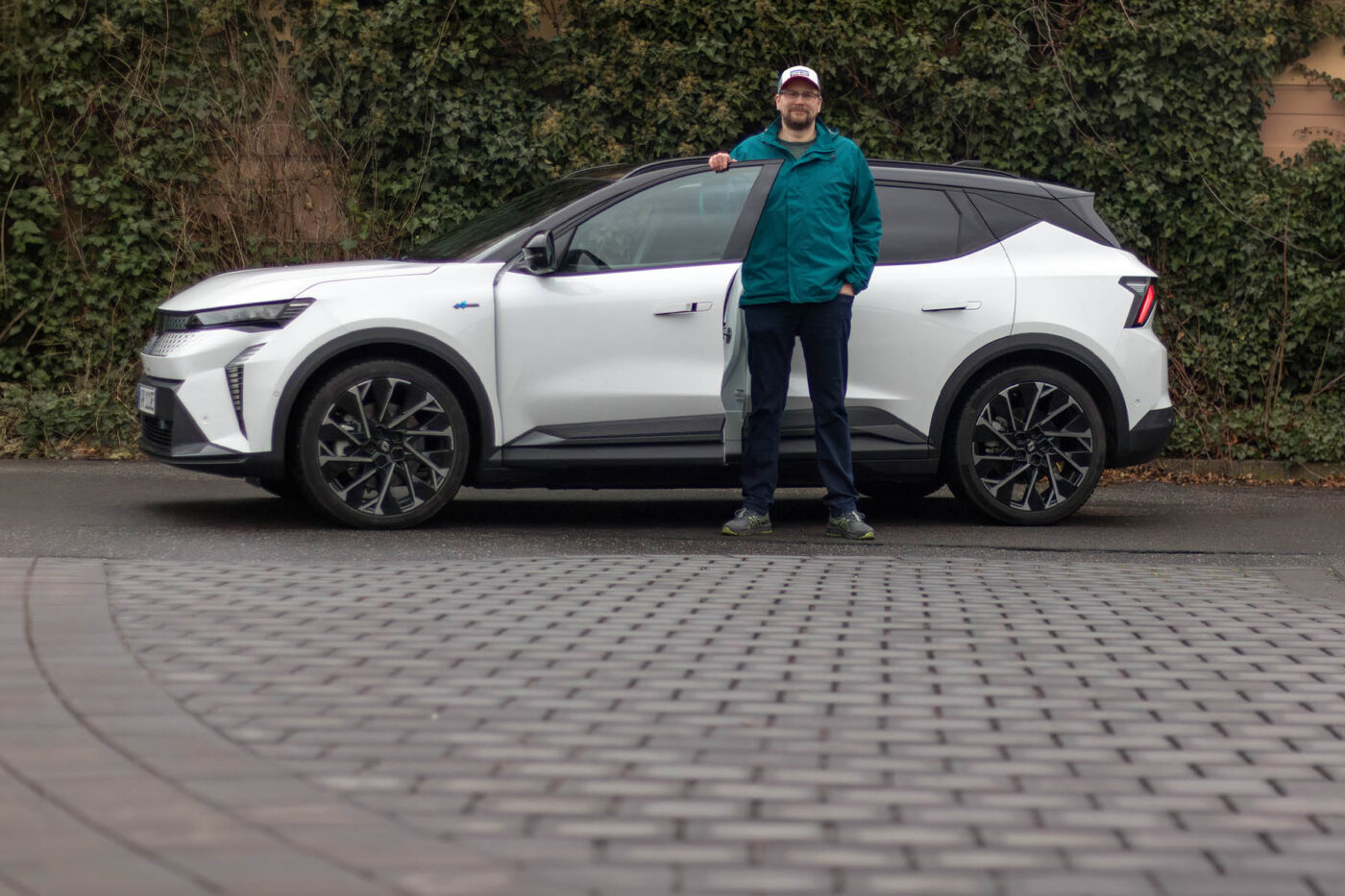
Renault Scenic put to the test: A family-friendly company car?
Until 2023, the Scenic was built as a practical, compact and affordable van – I was able to experience two generations of the model myself. Today, only the model’s classification as a minivan is reminiscent of days gone by. Just like other vans, such as the Opel Zafira, the Scenic also adapted to market demands. In other words, it had to transform into an SUV.
At 4.47 metres long, the all-electric Scenic is about eleven centimetres shorter than a VW ID.4 and 12.5 centimetres shorter than the Ariya from Nissan, a former sister brand, which also uses the AmpR Medium platform. Its other dimensions – 1.57 metres high and 1.86 metres wide – put it in the same league as models such as the BMW iX1, BYD Atto 3 and Ford Explorer. The wheelbase of almost 2.79 metres, on the other hand, puts it in the same league as the Audi Q4 e-tron, Cupra Tavascan, Peugeot e-3008 and Skoda Enyaq. There is a long list of competitors for the Scenic, which was available to test in the Esprit Alpine 220 Long Range variant in Pearl White.
But it is not just the colour of the car that contributes to the Scenic’s pleasing appearance. Its brawny, angular design also captures the spirit of the age – the days of the reserved MPV silhouette are finally over, at least as far as the Scenic is concerned. Black diffusers at the front and rear, wheel arches and sills, combined with 20-inch alloy wheels, give the SUV a sporty character.
However, Renault’s newly designed exterior is strongly influenced by the competition. In particular, the front-end design with its full LED light signature is reminiscent of the Peugeot e-3008 at first glance. At the rear, the French carmaker seems to have drawn inspiration from BMW. The Scenic does not stand out significantly from the competition – but this does not necessarily have to be a disadvantage. However, the visual distinctiveness is lost to some extent. In terms of design, the Scenic is now one of many electric SUVs.
Somewhat less common in this area of design are the retractable door handles that have been added to the Scenic. As soon as you approach the vehicle, the retractable door handles automatically extend – a detail that is less important for visual reasons than for aerodynamic ones.
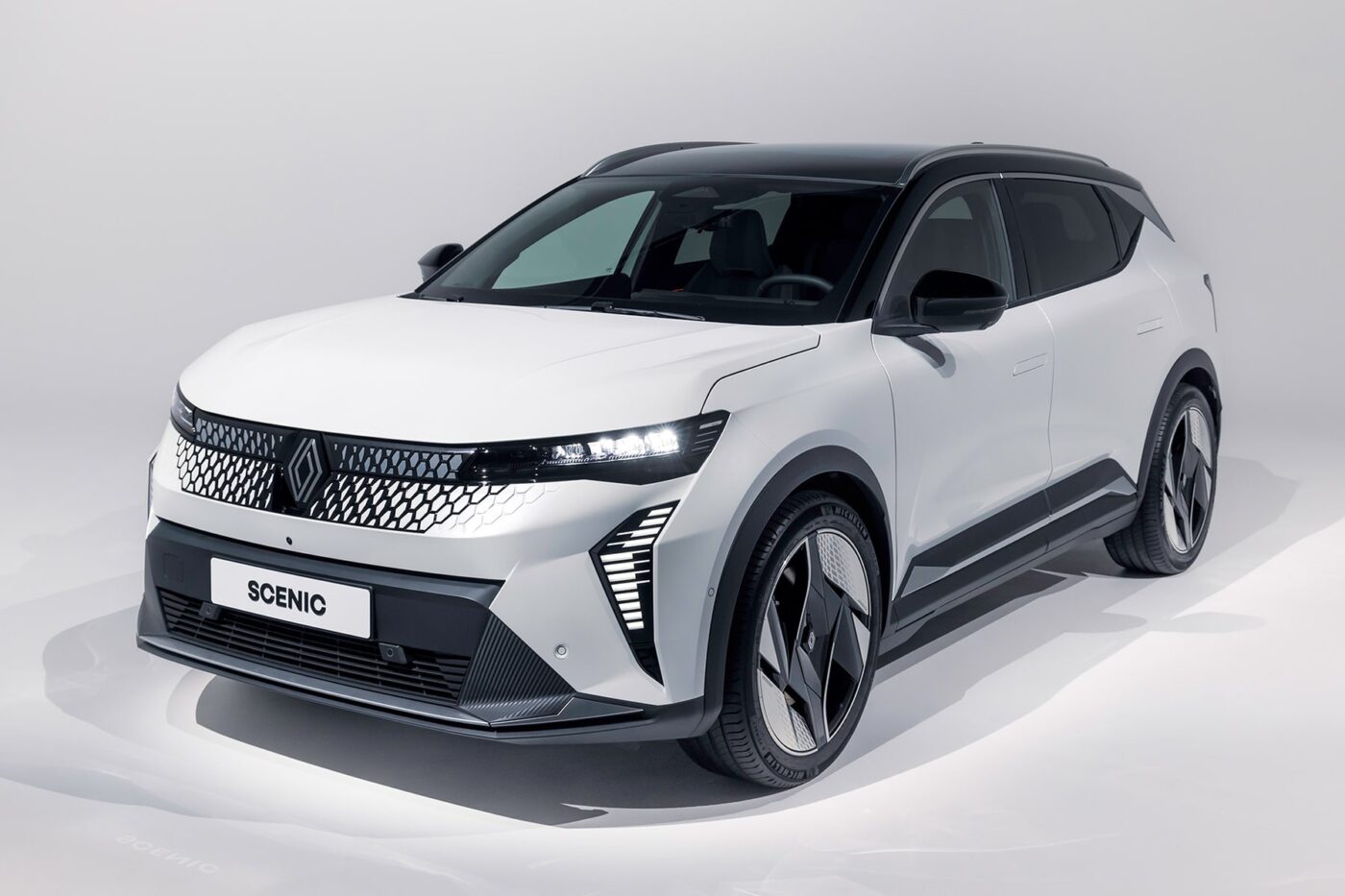
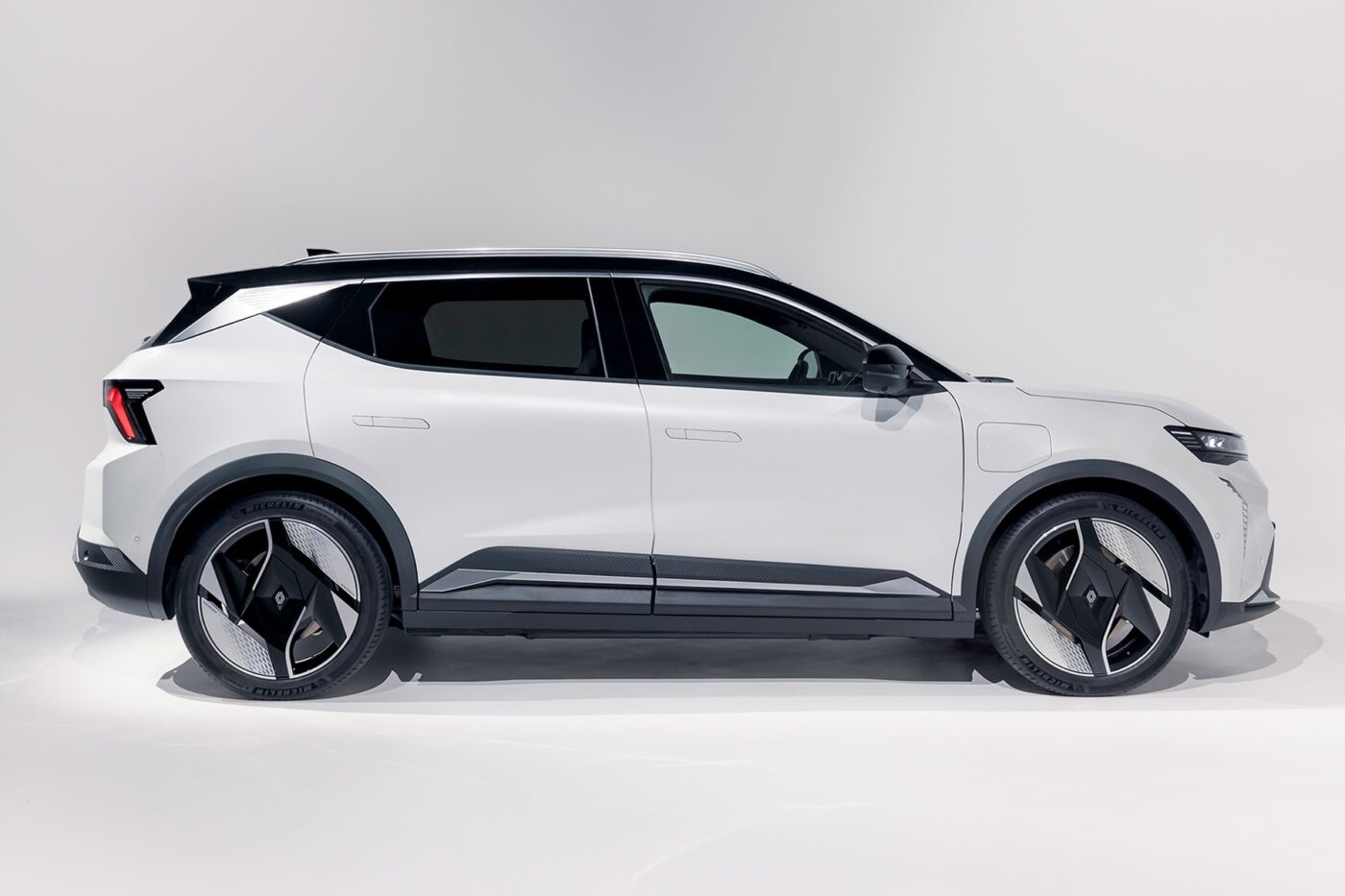

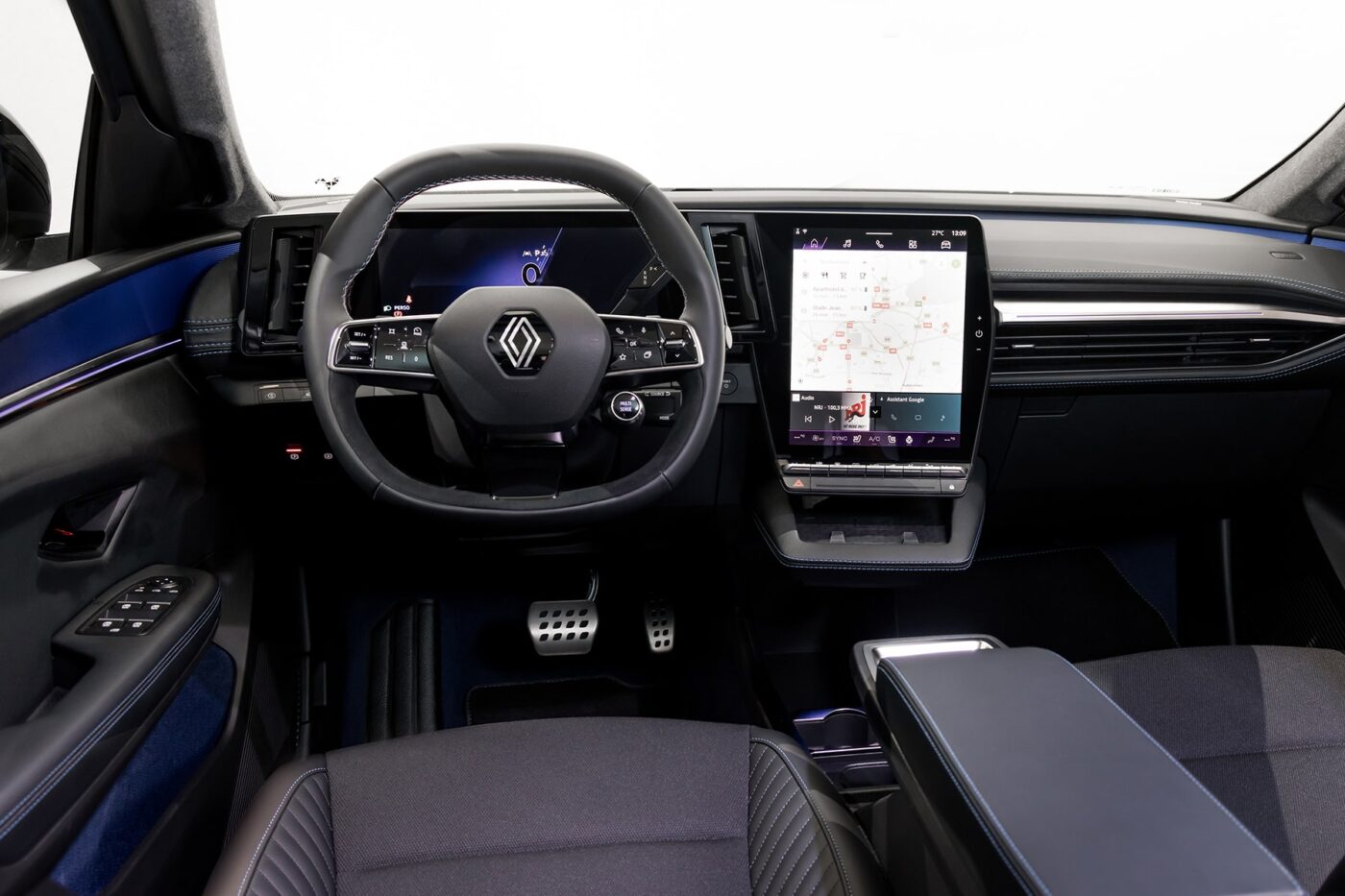
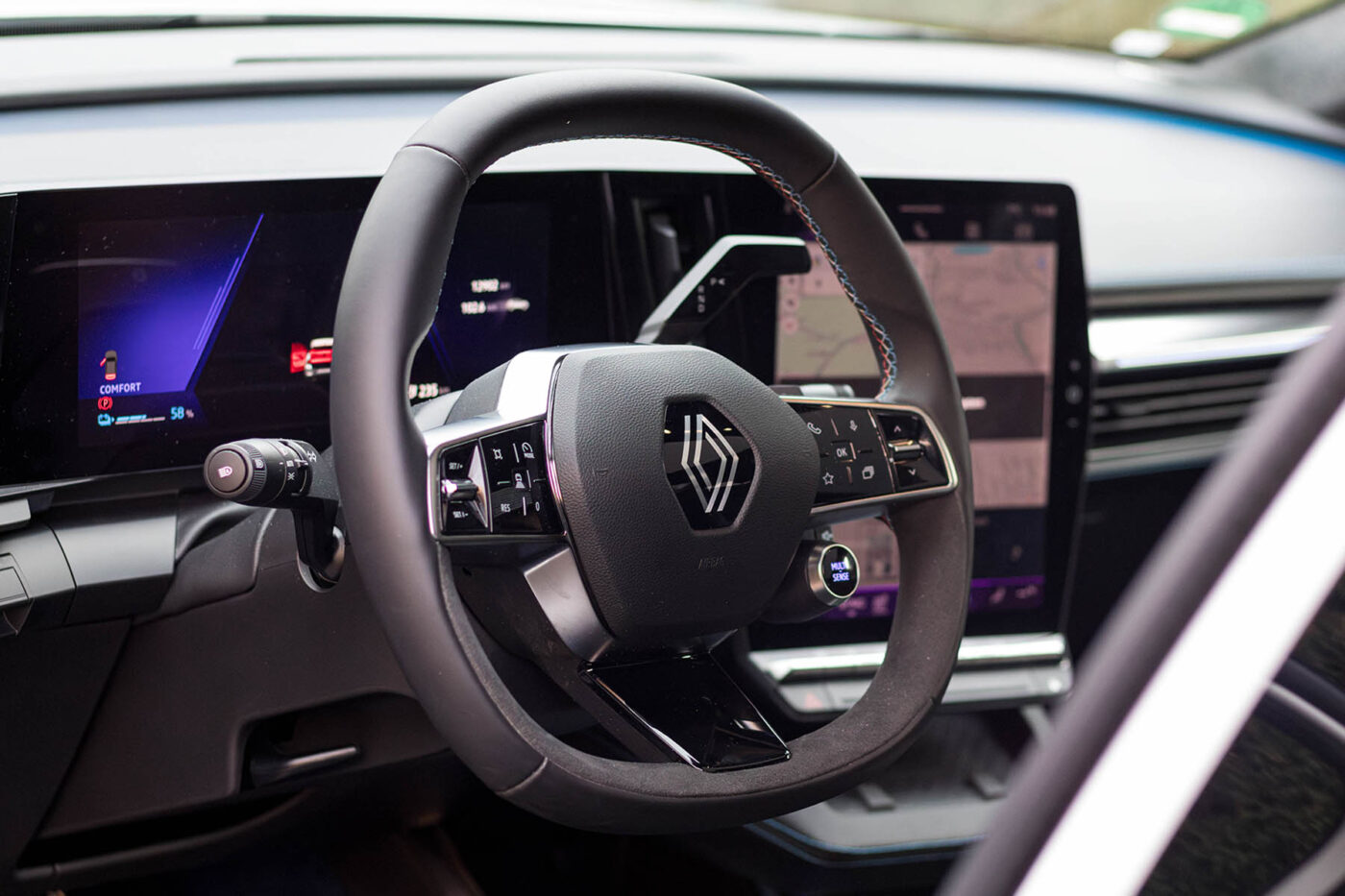
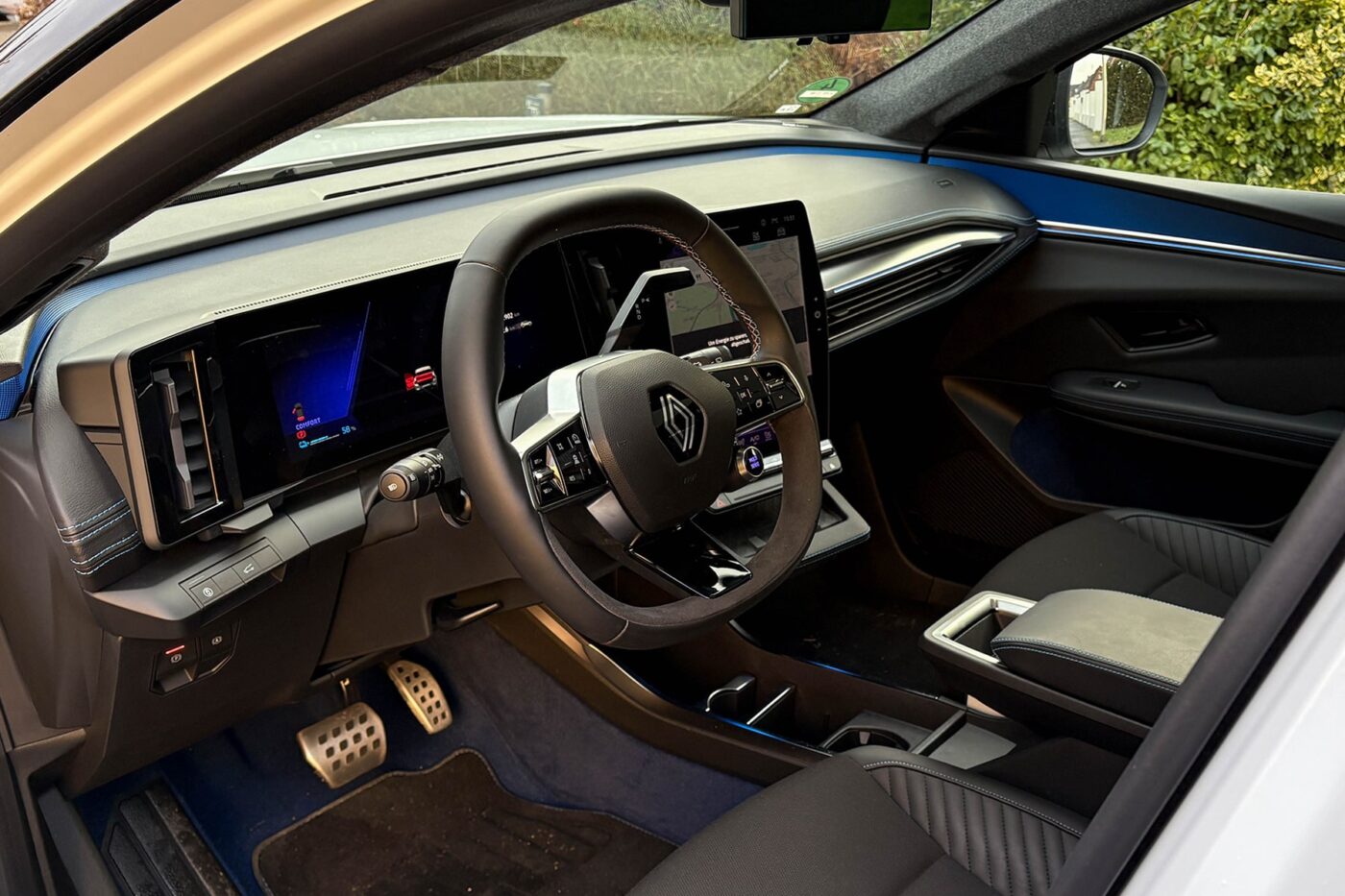
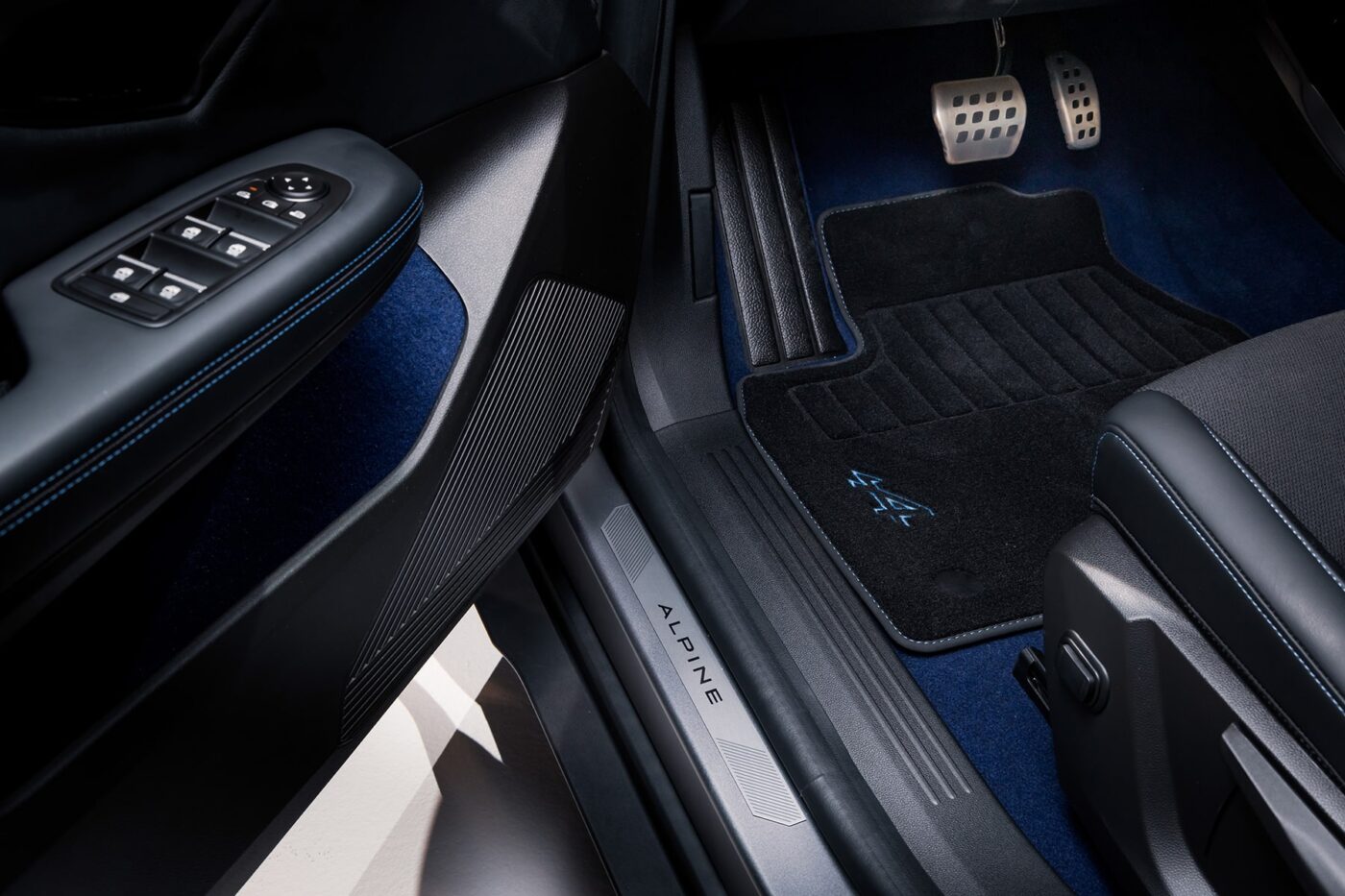
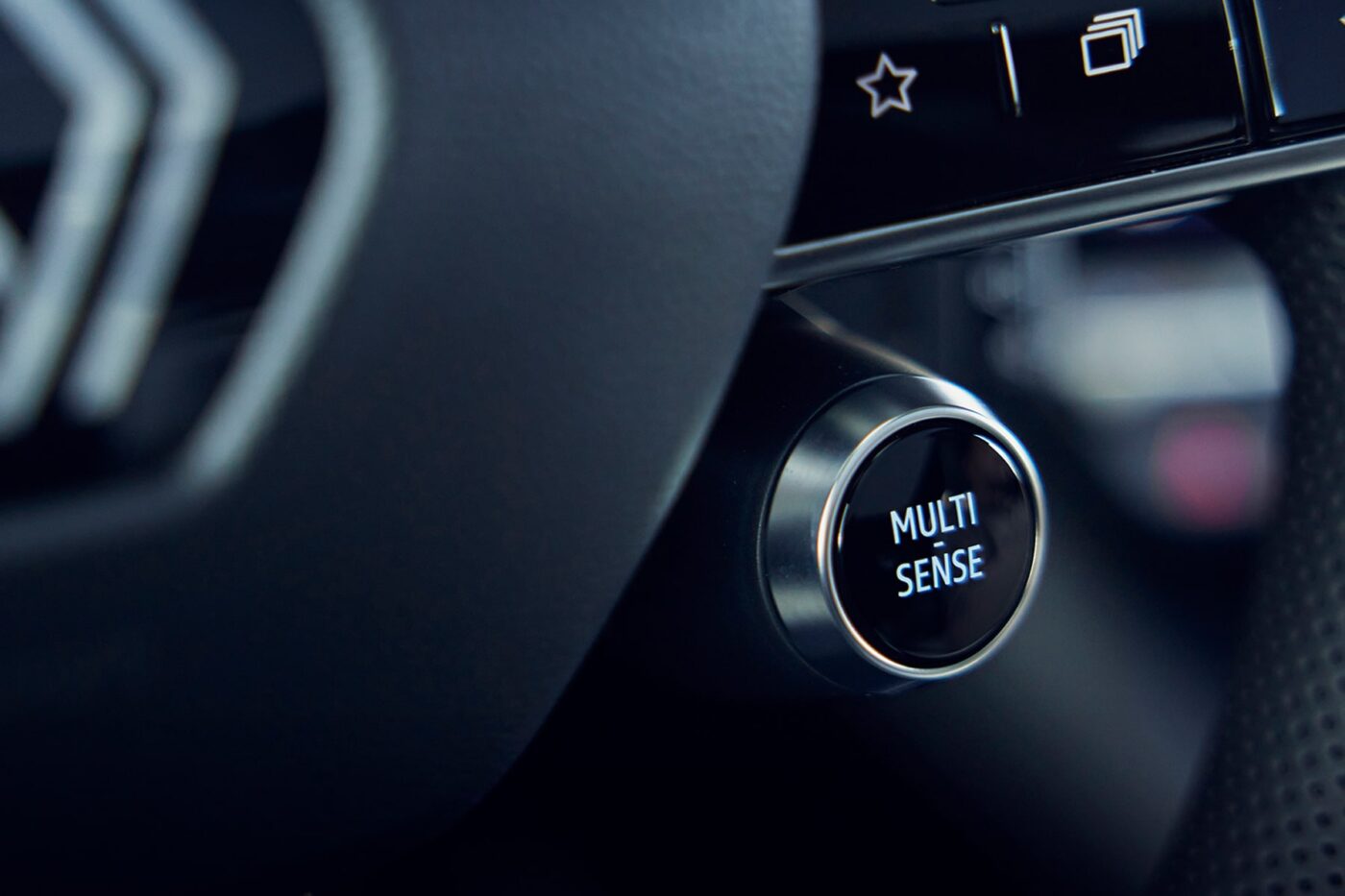
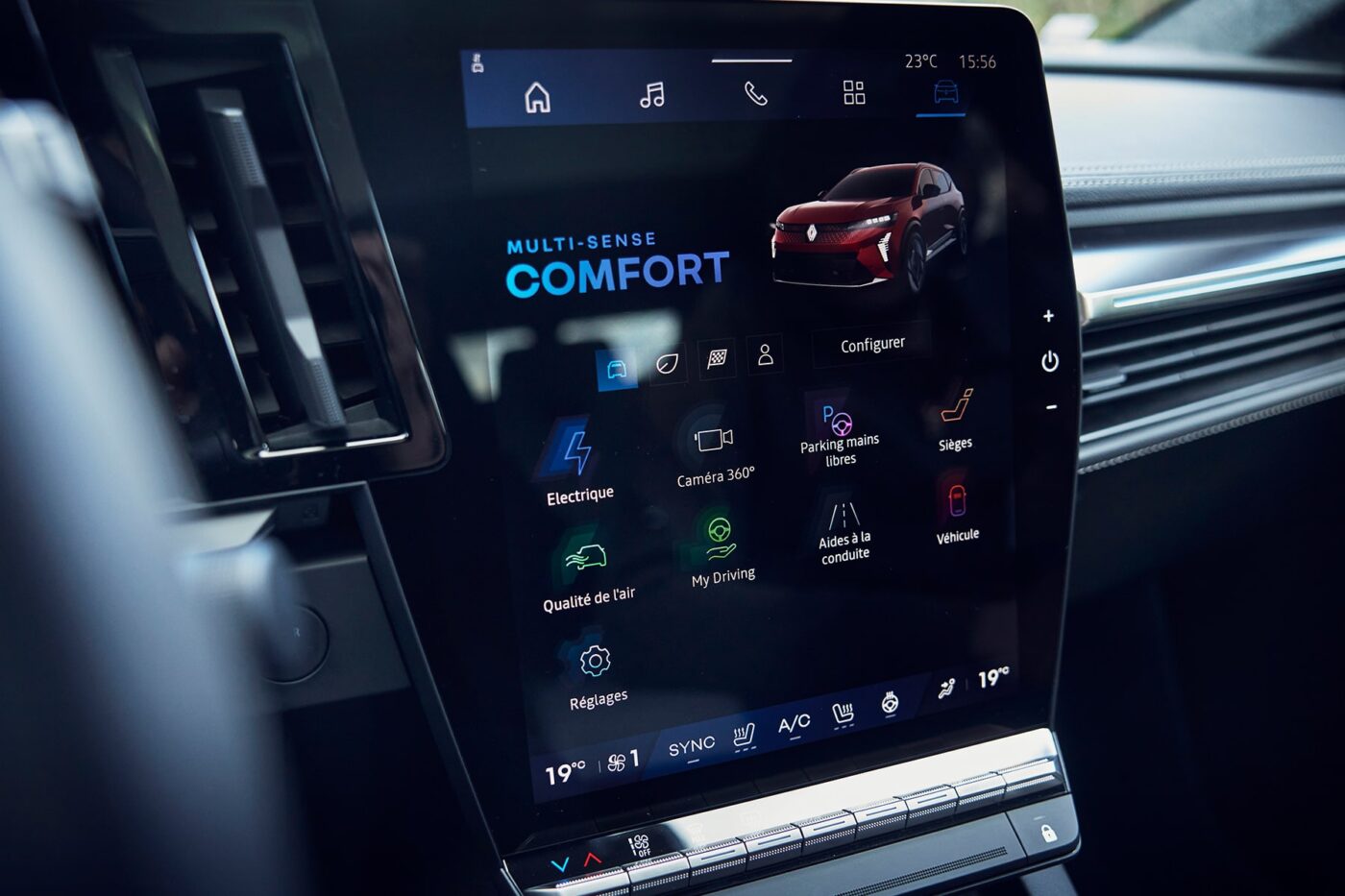
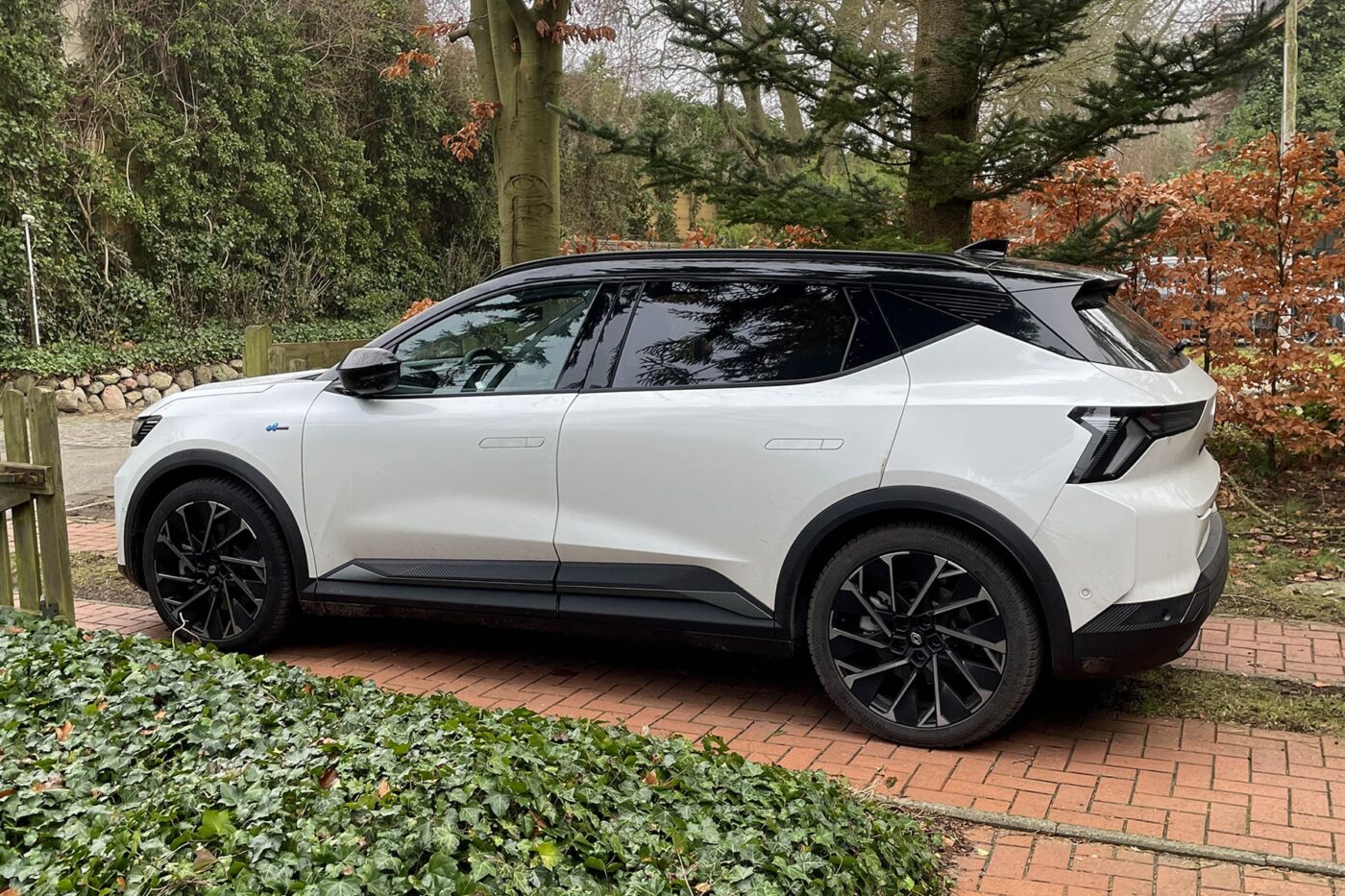
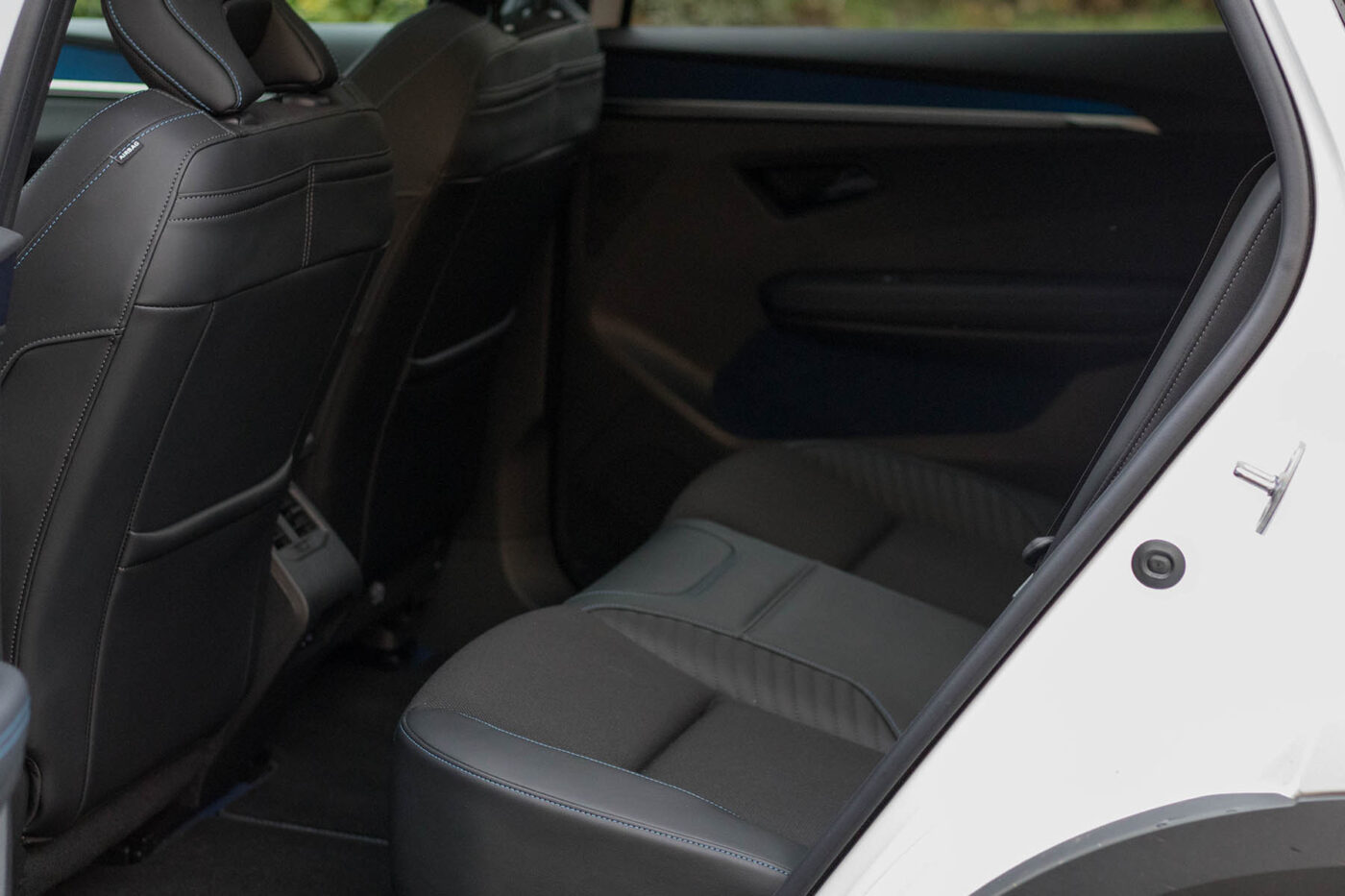
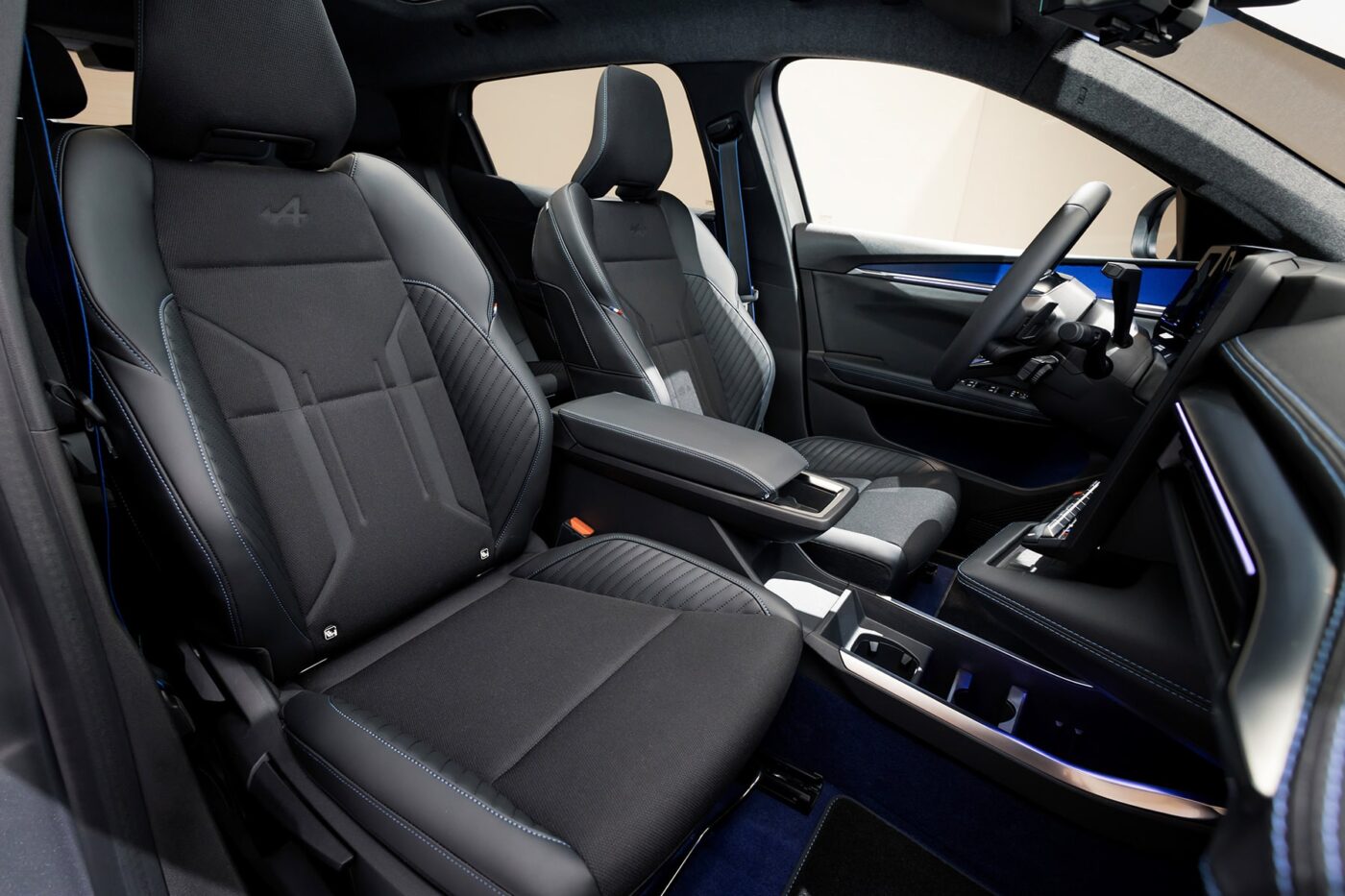
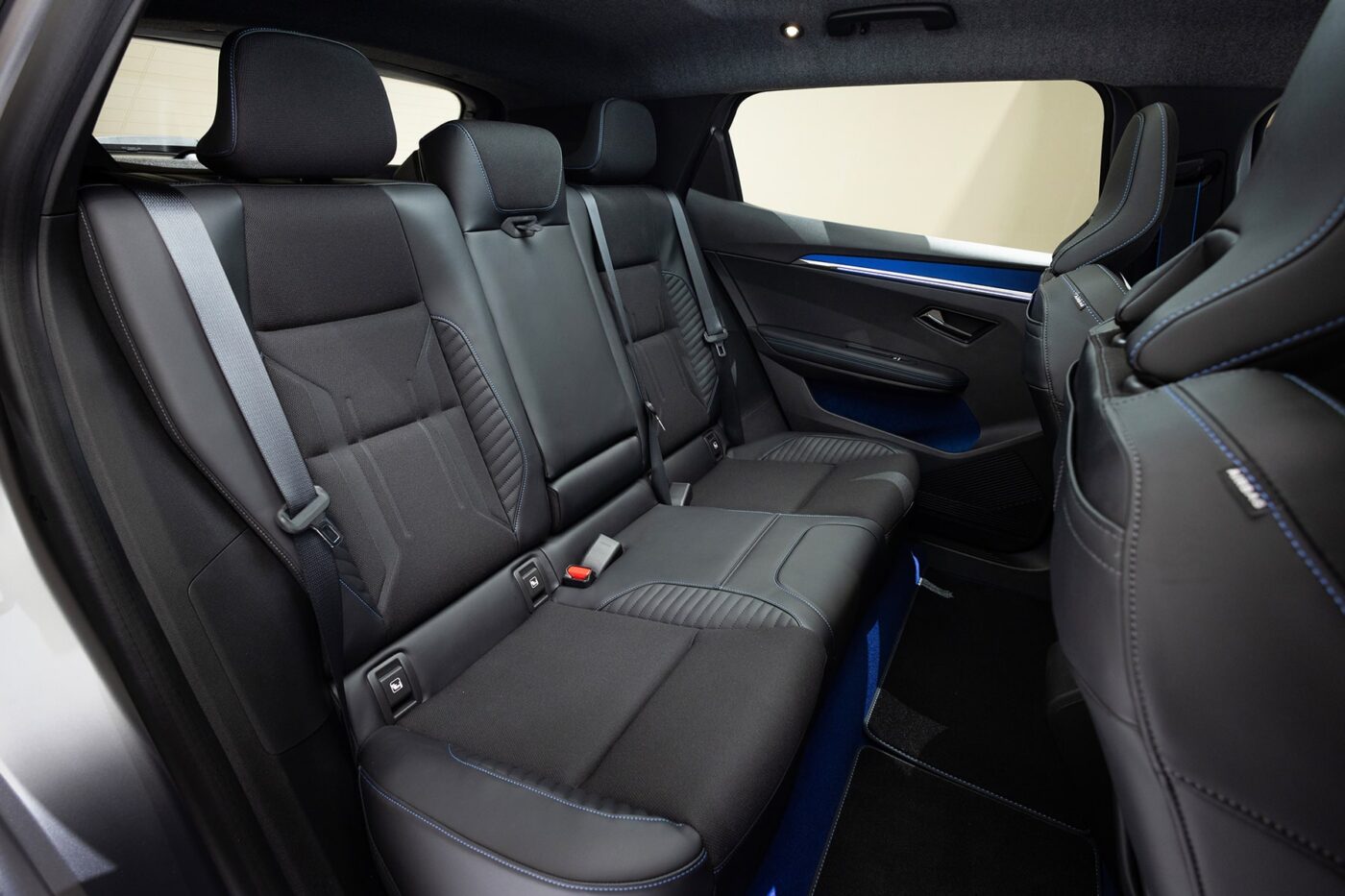
There are no big surprises in the interior either; the cockpit is – typically for Renault – very tidy. The similarity to its smaller platform brother, the Megane, is unmistakable. It is thus hardly surprising that the Alpine steering wheel, which is also equipped with numerous buttons, also has a large round multi-sense button for selecting the driving mode. Two steering wheel paddles are used to adjust the recuperation. One-pedal driving was not available in the test car. However, Renault already announced that it intends to offer this function in the future. The carmaker also loses points for the three steering column levers to the right of the steering wheel – too many to be easily operated.
Renault did a better job integrating the two 12-inch L-shaped displays into the dashboard. The display mounted vertically in the centre of the cockpit still has a row of easy-to-use physical buttons at the bottom, which can be used to control the air conditioning, among other things.
The sports seats offer a comfortable and firm hold. However, even with the top-of-the-range models, the option to electrically adjust the seats does not come standard. In the variant we tested, the option is not even available. It’s a shame because the high-quality materials and technology in the cockpit give the Scenic the overall impression of a premium-segment vehicle. The blue decorative seams, the blue decorative elements on the doors and above the dashboard, the chrome pedals, and the seats and steering wheel give it a sporty touch.
Not strong in sportiness
While the design is athletic, the sporty claim is not met in practise. The data on paper alone shows that the Scenic E-Tech is not designed for a dynamic driving style, even if the model gives the impression of being so. As in the Megane, Renault also uses an externally excited synchronous motor in the Scenic – this electric motor design does not require rare earths. Incidentally, in the version I tested, the 220 in the name stands for the figure in horsepower. So far, Renault has not been able to completely break away from the old world. In the new unit of measurement, that’s 160 kW – Renault doesn’t offer more power.
The front-wheel drive car takes 7.9 seconds to sprint from 0 to 100 kph. Other figures, such as the acceleration from 80 to 120 kph in 5 seconds or the top speed of 170 kph, also make it clear that the Scenic is rather mediocre compared to the competition. Not bad, but not top figures either.
The electric car’s strengths lie elsewhere: The chassis is designed primarily for comfort, and potholes are absorbed with ease. However, the chassis never felt wonky, whether in the city, on country roads or on the motorway. On the other hand, the steering felt a little too light, and more direct feedback would be desirable. There is hardly any noise coming from the wheel arches. In general, the noise level is very low. But only as long as the air conditioning does not have to run at full blast. Because then it gets unpleasantly loud. It seems that optimising the noise level of the air conditioning system was not given top priority.
Another of the Scenic’s strengths is its range. Equipped with an 87 kWh battery, Renault estimates the combined WLTP range to be up to 598 kilometres, with an inner-city range of up to 787 kilometres. Even if the real range is effectively lower, commuters and families rarely have to worry about the Scenic’s range – with a dedicated wall box at home or a charging option at work, it’s no longer an issue. Incidentally, Renault equipped the Scenic with a 22 kW charger as standard for AC charging. Many manufacturers no longer offer this option and only deliver their vehicles with an 11 kW charger.
The situation is different for frequent travellers because what counts for them is not only the range but also the duration of the trip – including charging stops. During the test period, temperatures were mostly just above zero degrees Celsius. Consumption values fluctuated between 18 and 21 kWh/100 km for city and country driving, which means ranges of around 480 and 420 kilometres. On the motorway, consumption rose at times to well over 23 to 25 kWh/100 km, reducing the range to 380 to 350 kilometres. This is not a peak value, but given the external conditions, it is not a value that the Scenic has to hide behind either. Now that the temperatures are rising again, however, the achievable ranges are also increasing significantly.
Charging performance is only mediocre
Whether it’s winter or summer, Renault offers a range display with different scenarios in the driver information display, which proved very practical. In conjunction with the SoC display, it is easy to see when the next charging station should be approached. If you reach the fast charger with an SoC of 15 per cent, the charging process to 80 per cent should take 37 minutes with a maximum of 150 kW. The competition does this better – in some cases significantly so.
Another sticking point in winter is the battery temperature – but this applies to almost all electric cars. If it is too low, the battery management system reduces the charging power to prevent permanent damage to the cells. However, this also means that the charging time is extended. To at least achieve the value from the datasheet even in the cold season, there must be active route planning to the next high-power charger. Only then does the preconditioning work to bring the battery to an optimal temperature. Unlike the Nissan Ariya, there is no manual activation of this function, which is a shame.
Once a route to the fast charger has been planned, it takes experience to know when the battery is at the optimum temperature. There is no ideal way to do this. Other manufacturers have come further and dynamically show the driver the maximum charging power that can be used at that moment. They also show whether the maximum charging power has been reached at the respective charge level.
When we recorded the charging curve, driving a distance of around 70 kilometres at four degrees Celsius was enough to arrive with an SoC value of eight per cent and thus get as close as possible to the optimal charging curve. The maximum charging power of 150 kW was not reached with the displayed 144 kW at the EnBW fast charger, but the charging hub from ten to 80 per cent was still achieved within 40 minutes.
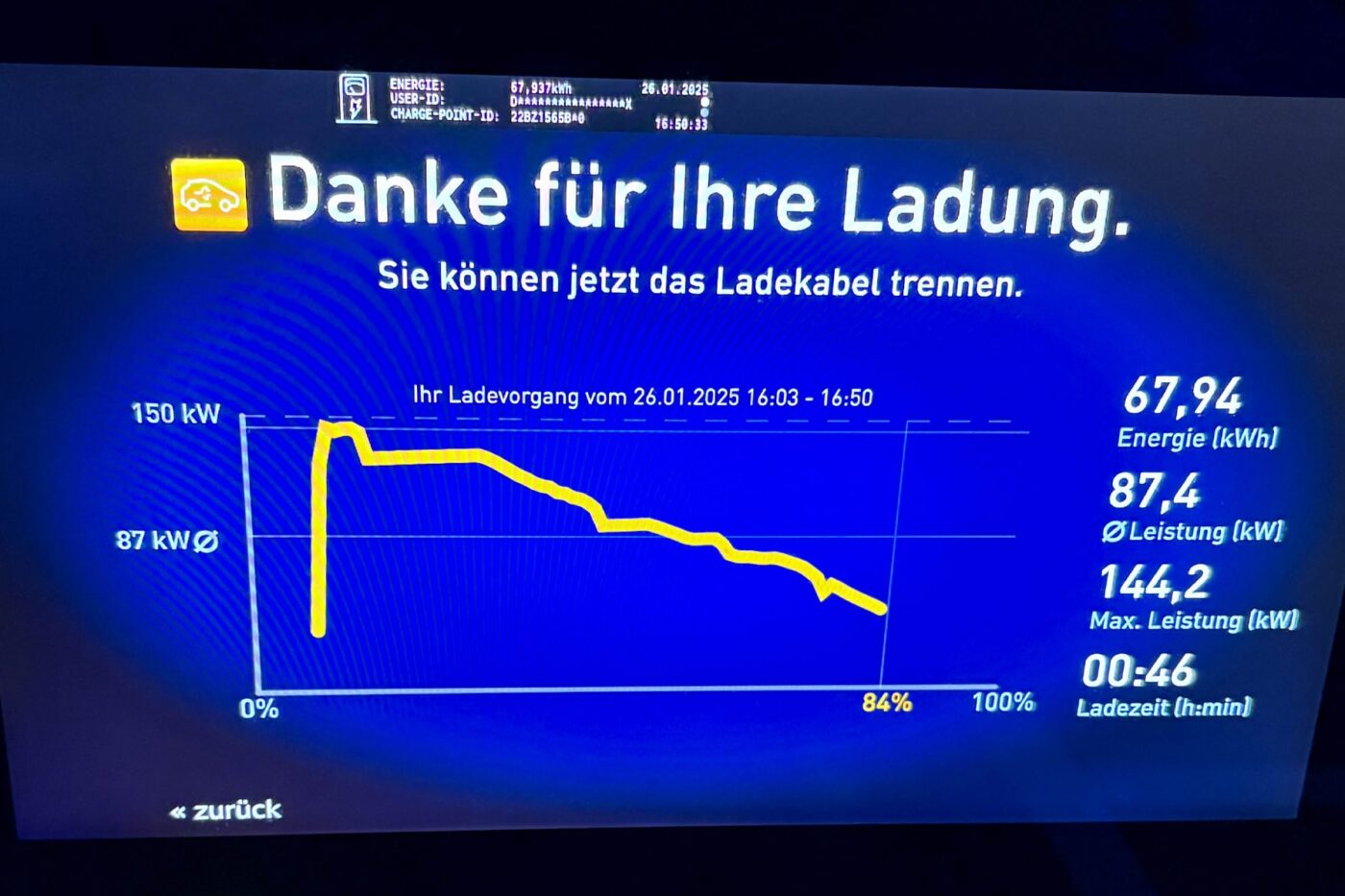
So, you need patience for long-distance driving. However, to keep the travel time as short as possible, the Google-based system plans the fastest possible route including charging stops. In practice, this worked reliably. However, the calculated SoC values upon arrival at the respective destinations are very conservative. The system may calculate that we will reach our next destination with six per cent remaining, but in the end, it could be 13 per cent. But I prefer it that way. If you want to refine your search for a suitable charging station, you can filter by charging capacity and payment service provider, but not by operator.
Relying on the Google operating system – not only for navigation – has already earned many manufacturers (including Renault and Nissan, as well as Polestar, Volvo and Ford) brownie points. It’s easy to find your way around the Scenic E-Tech’s smoothly running infotainment system. The voice control also works reliably. Need to quickly look up the opening hours of the supermarket in the next town? No problem. For those who prefer to use their smartphone, the Scenic offers the option of connecting an Android or Apple device wirelessly.
Pros and cons of the assistance systems
In any case, the system offers numerous functions and assistants that some competitors lack. The acoustic warning signal for speeding is pleasantly unobtrusive and can be deactivated with a double press of a button to the left of the steering wheel. The adaptive cruise control, on the other hand, is less convincing: it only reacts after a speed limit sign has been recognised. The gentle braking is pleasant, but the car only decelerates after the sign – which can be problematic in some situations, such as when approaching a speed camera. Only with active route navigation does the car brake before the speed limit sign. Other manufacturers have more elegant solutions, adjusting the speed before the sign – even without active route planning. On the motorway, however, the gentle acceleration and deceleration in combination with the reliably functioning lane departure warning system proved to be a pleasant support on long journeys. The cross-traffic warning system also intervened reliably – particularly helpful when reversing out of difficult parking spaces to avoid possible collisions.
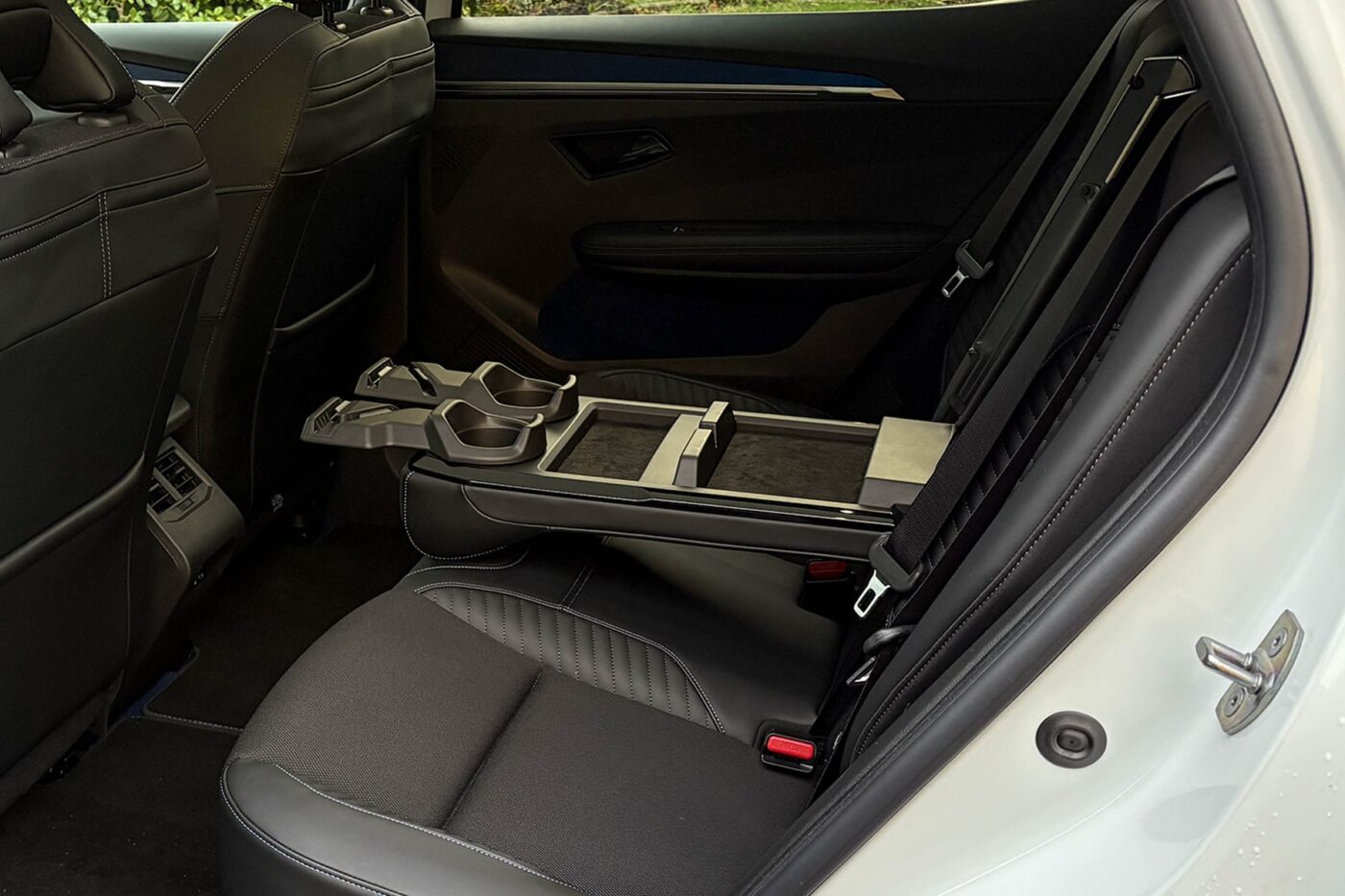
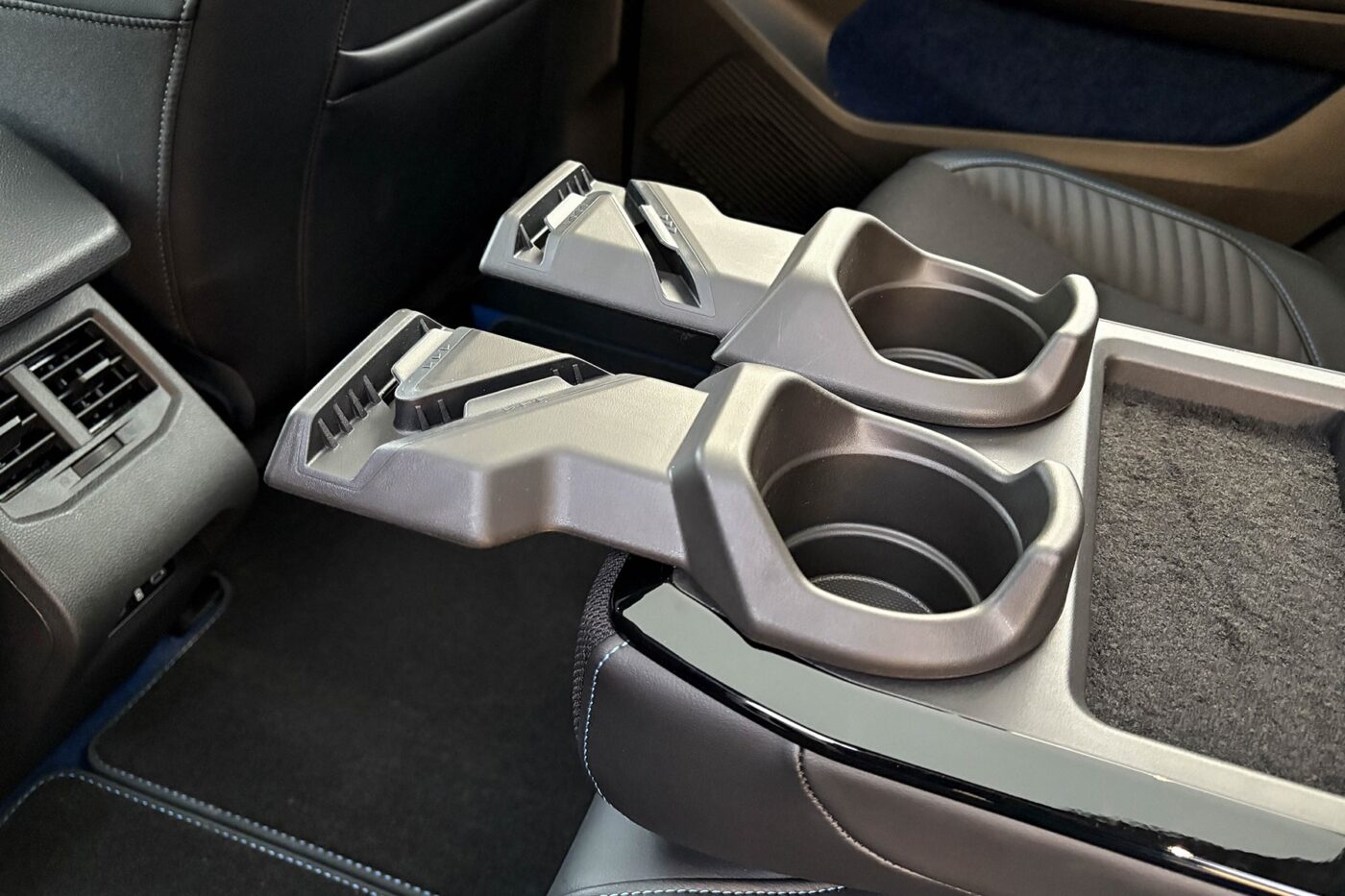
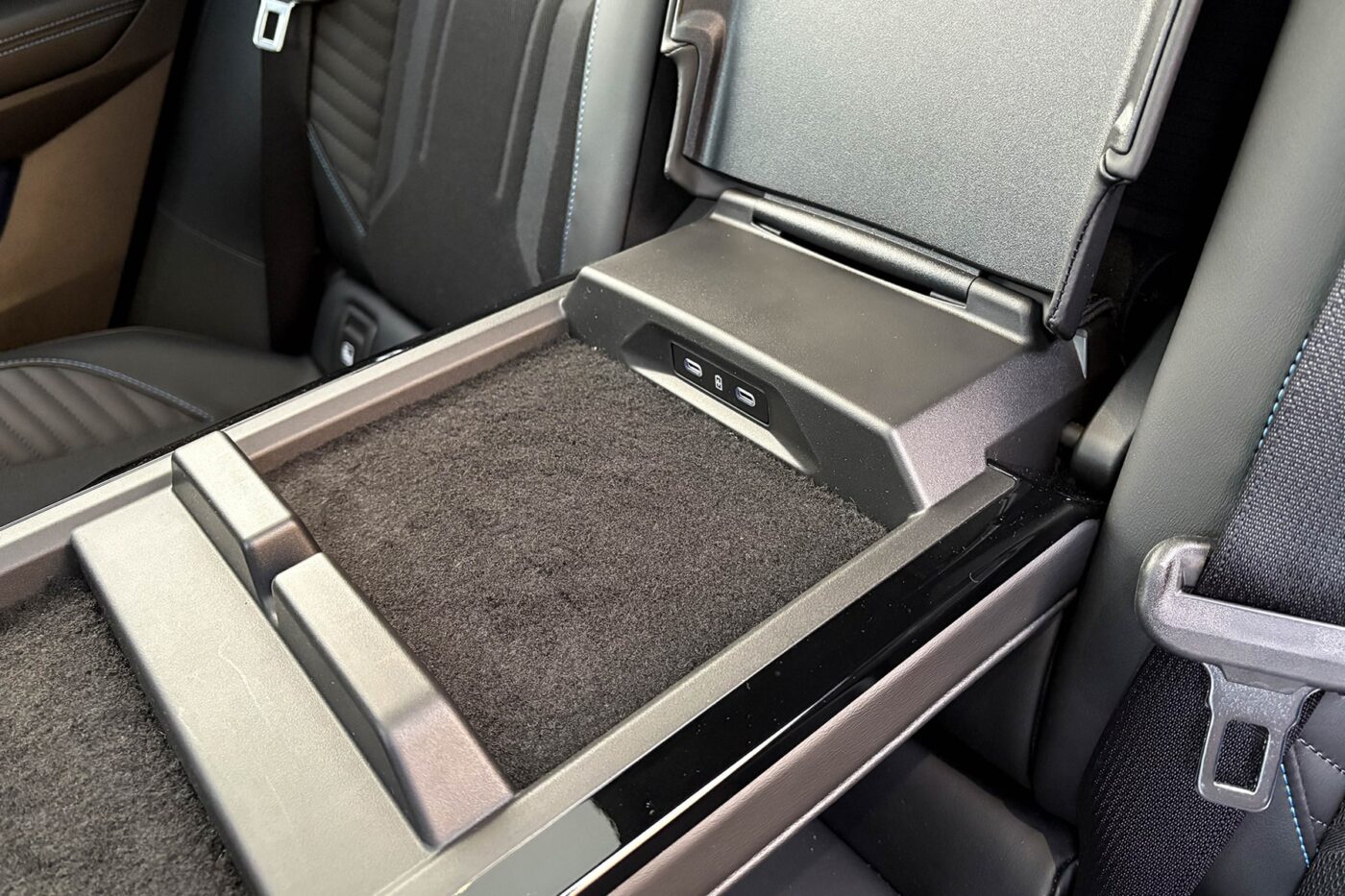
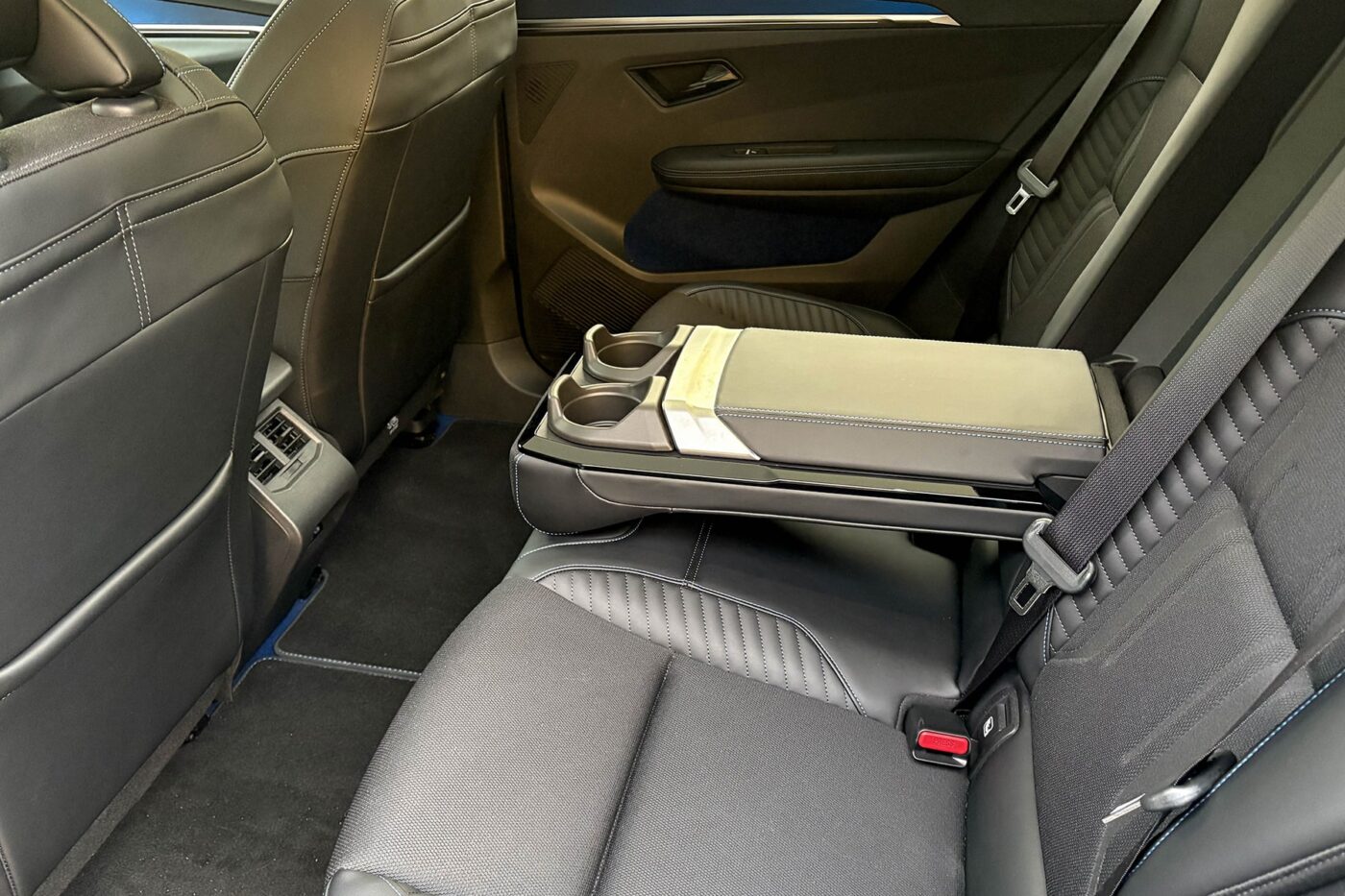
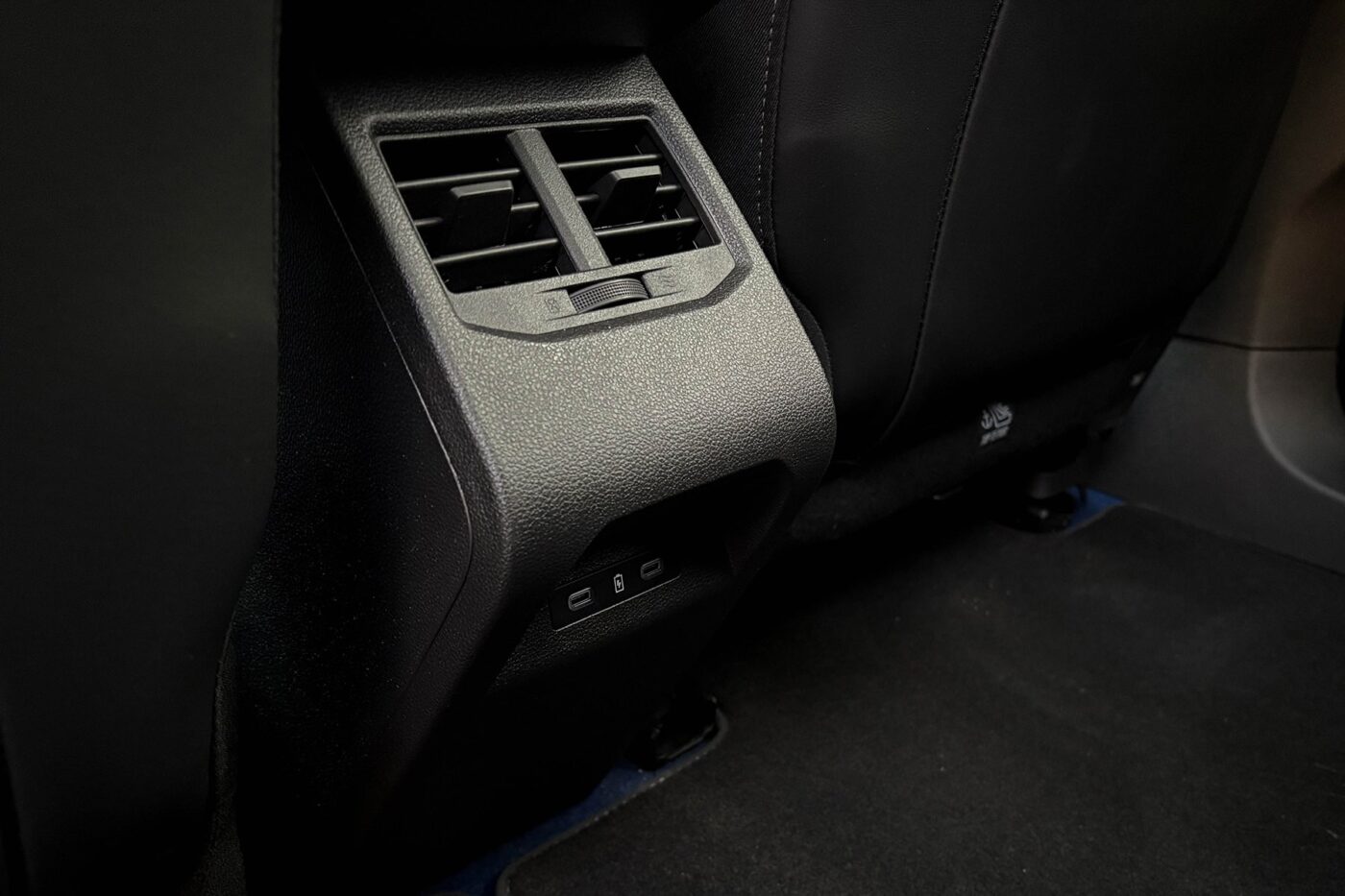
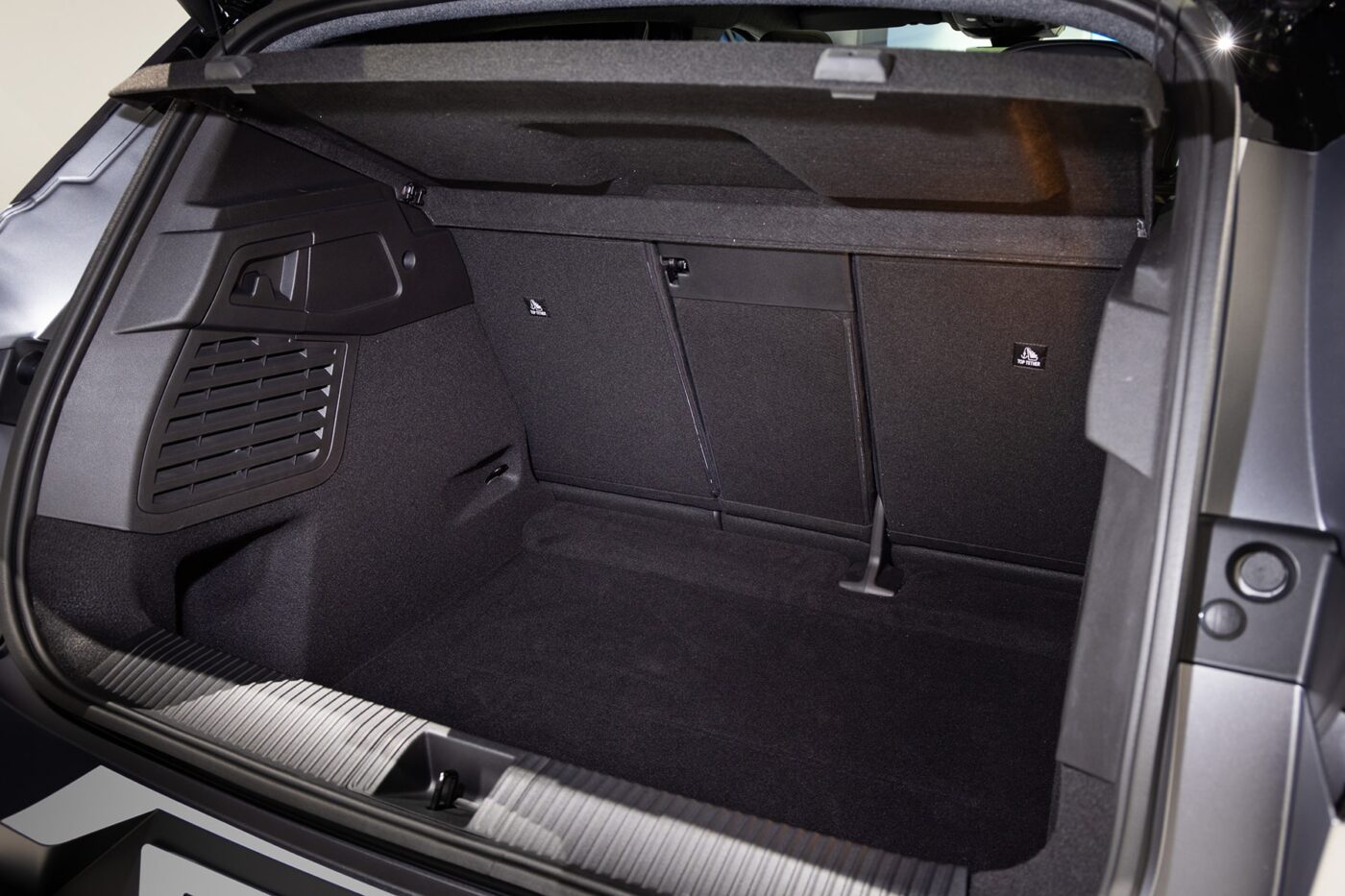
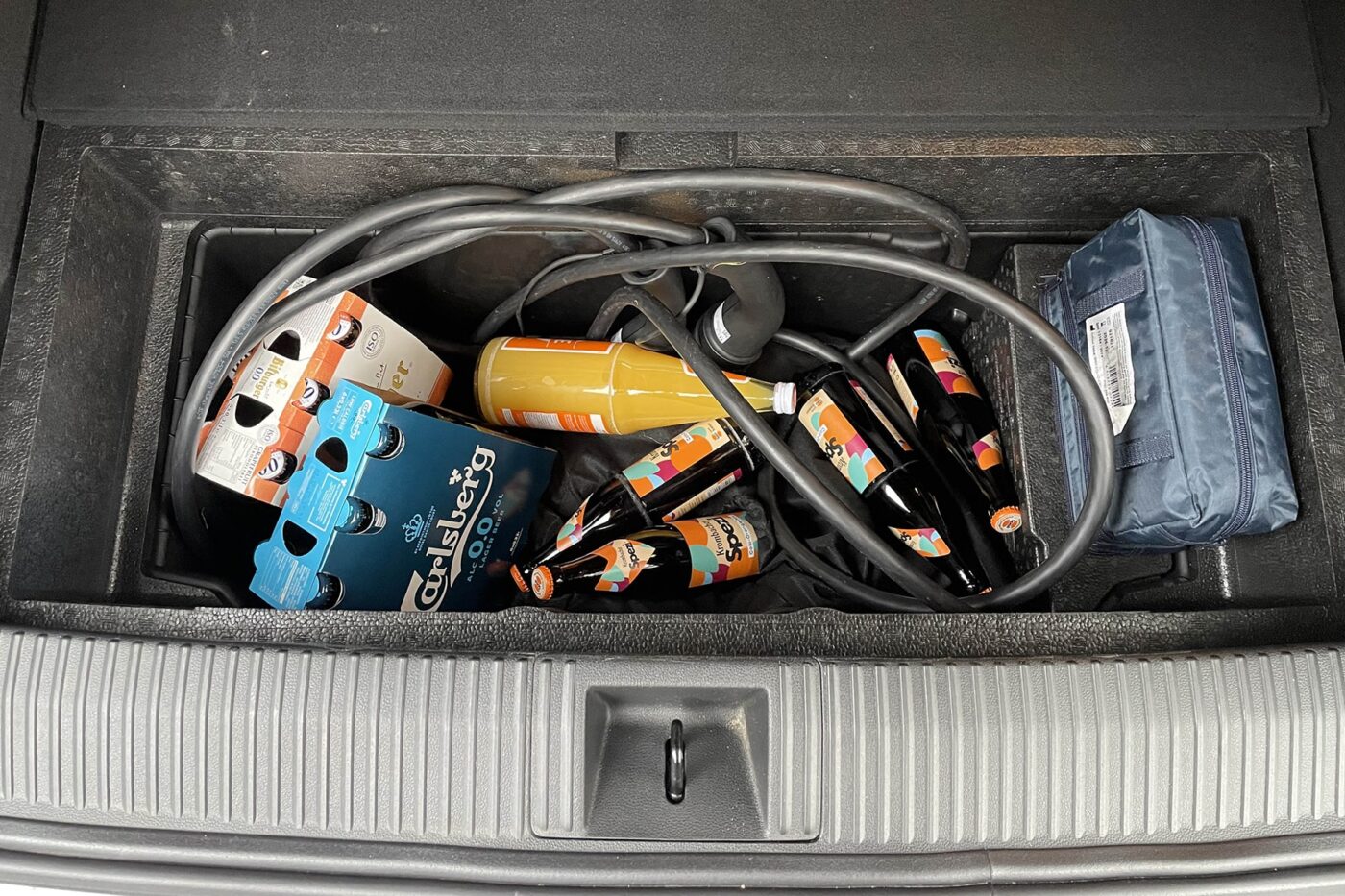
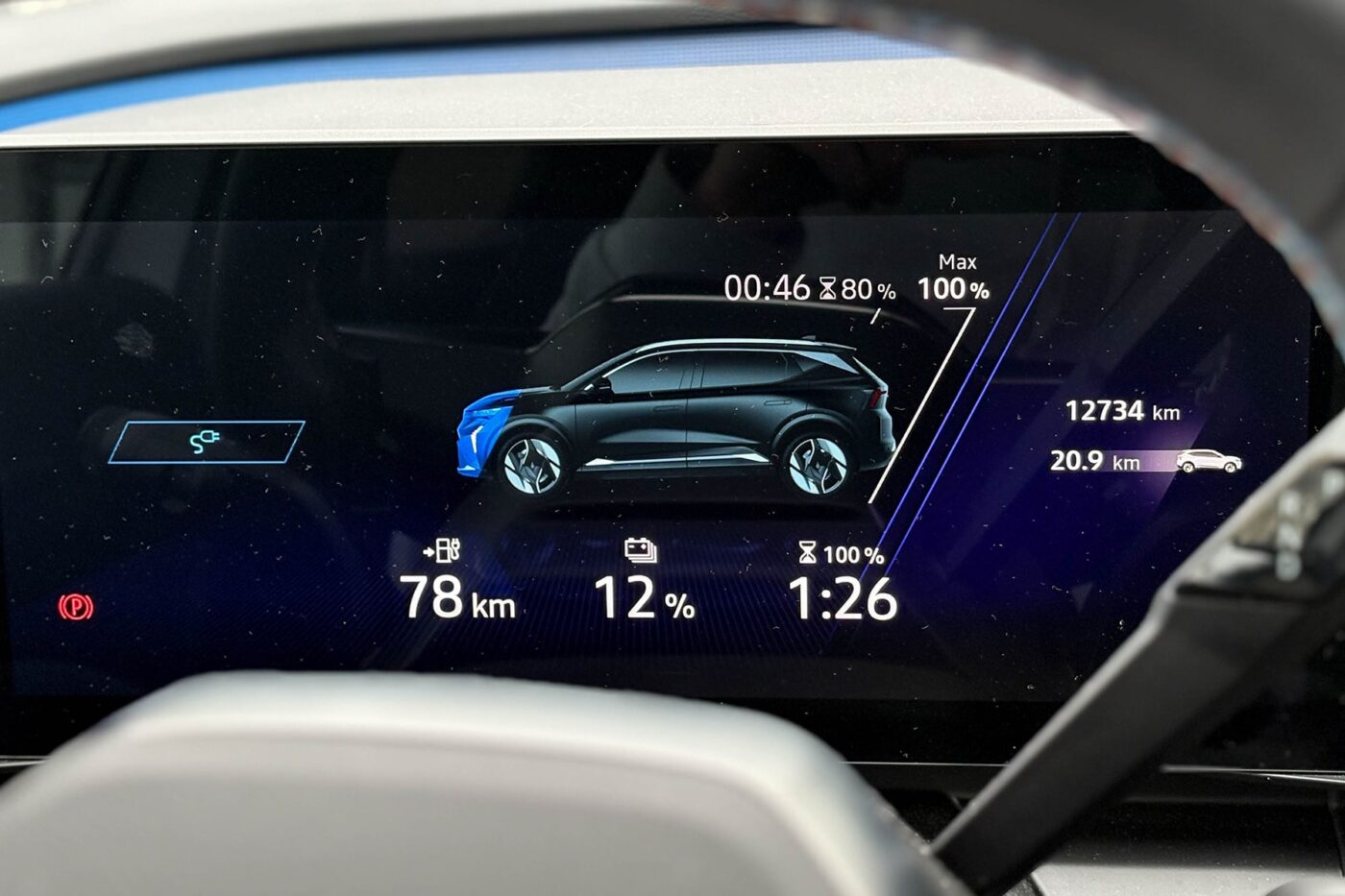
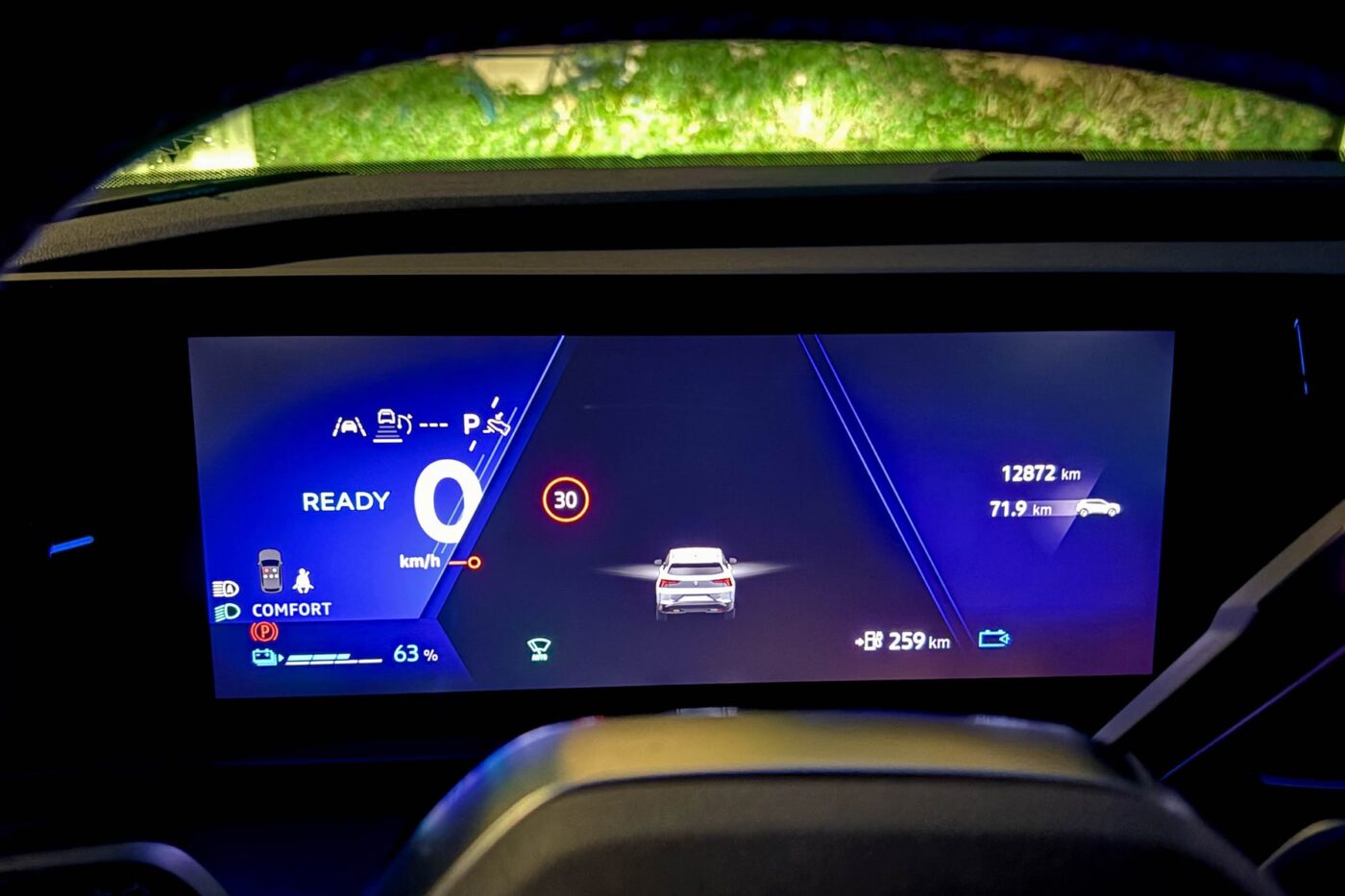
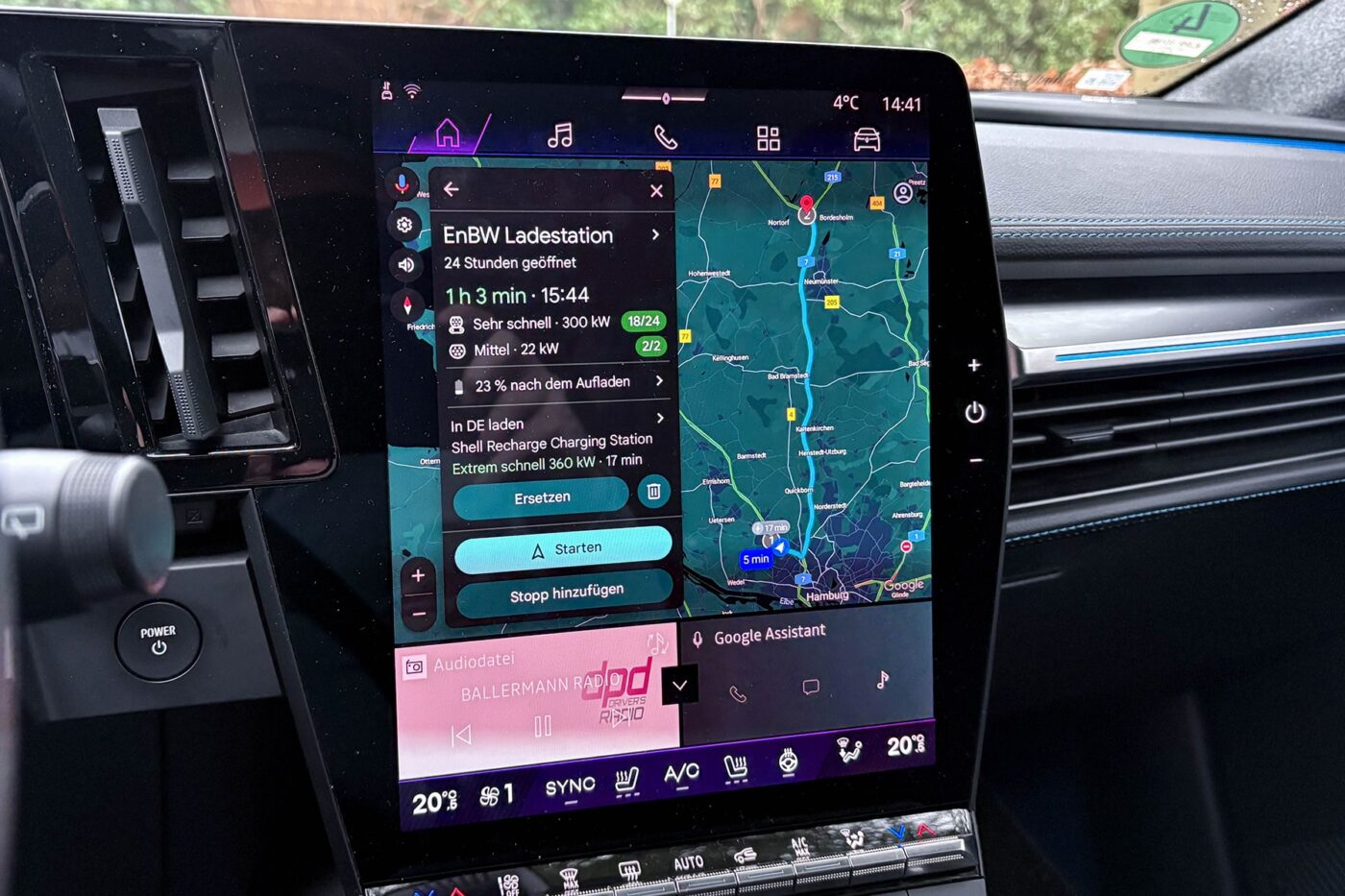
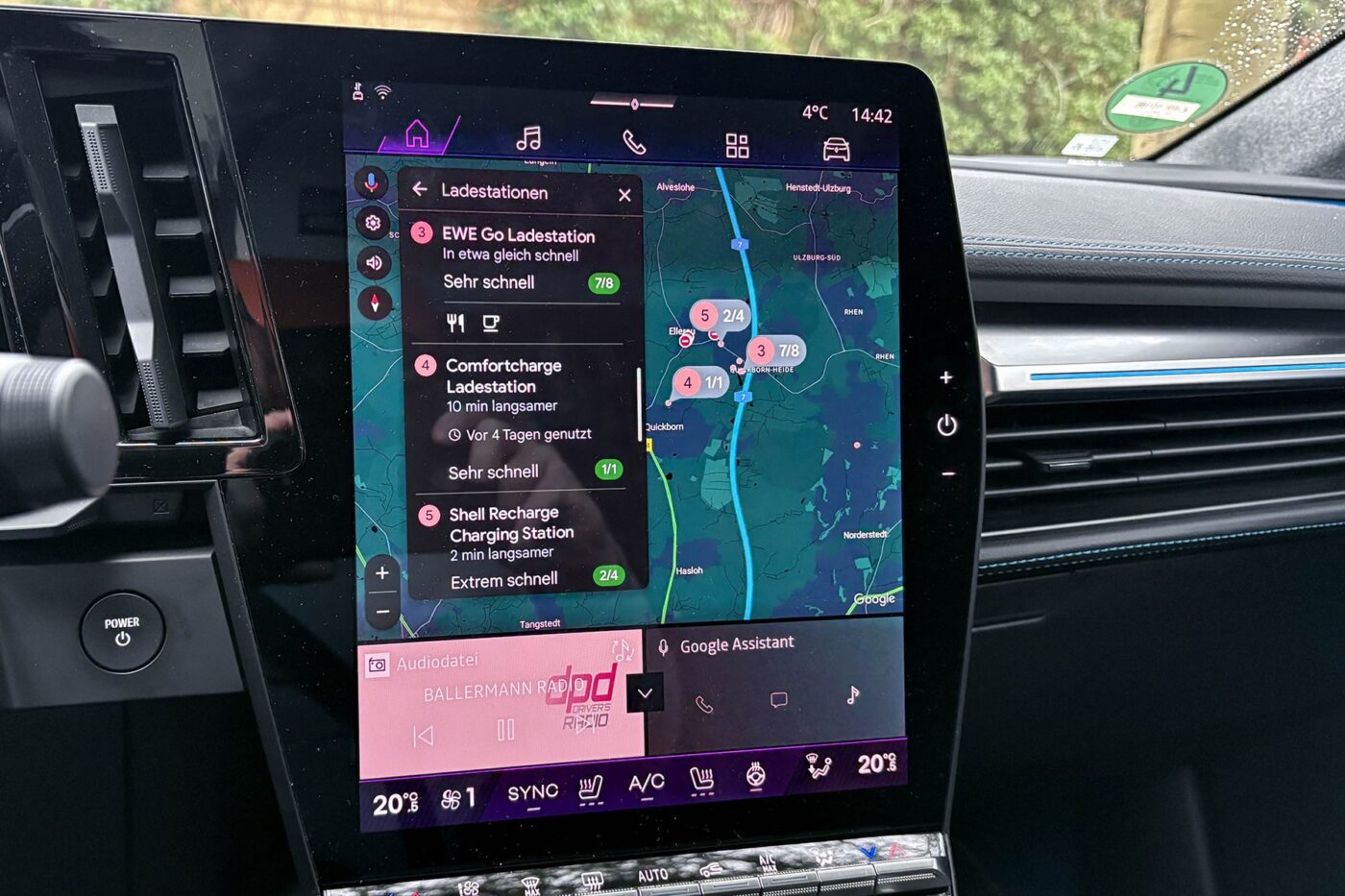
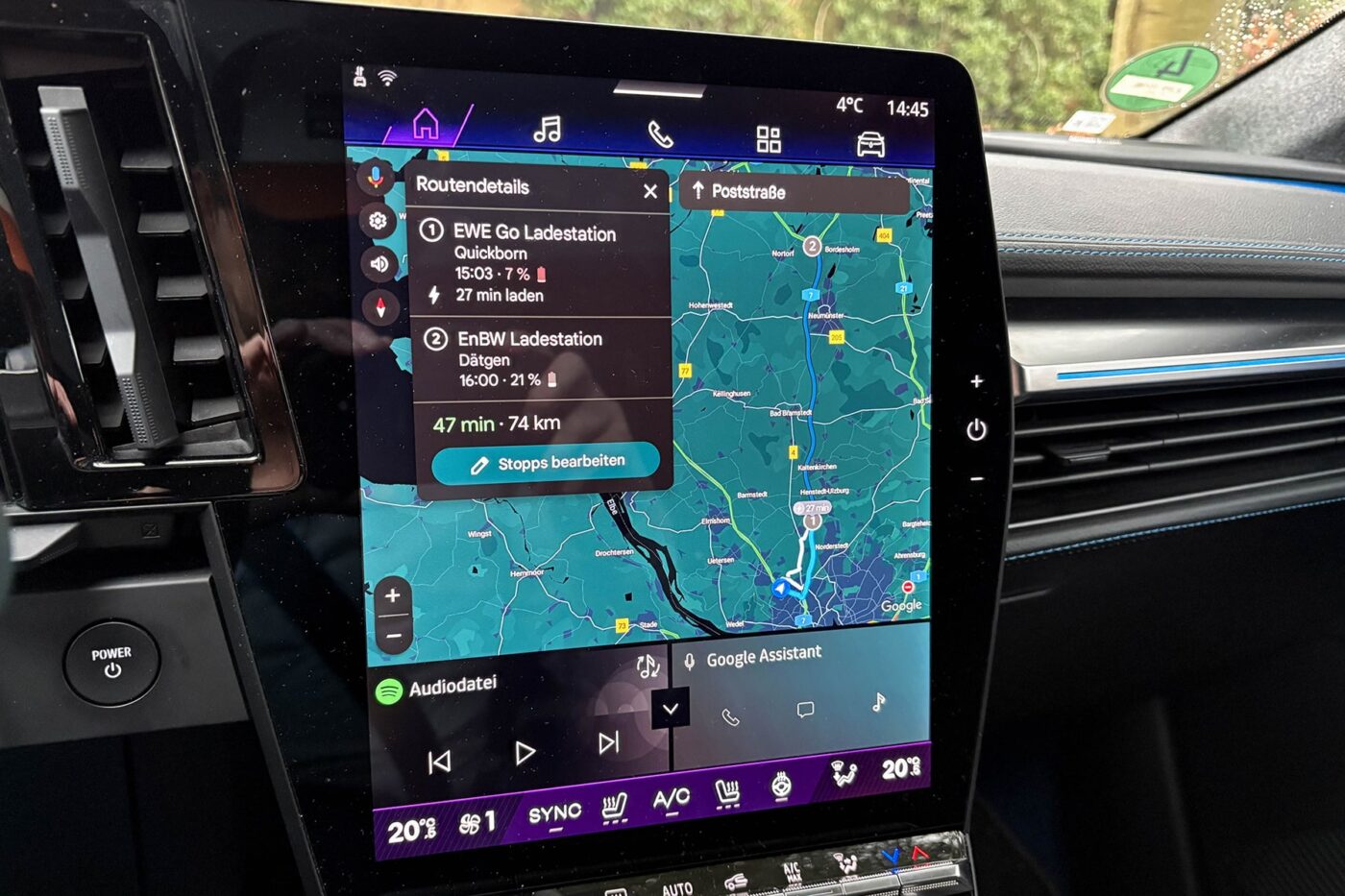
While there are pros and cons when it comes to the driving assistants, the picture is different when it comes to space. The compact SUV offers plenty of room for tall people. Not only in the front, but also in the rear, where they can comfortably survive longer journeys. Too little leg and headroom? Not at all. The Scenic is full of little refinements.
This is particularly evident in the fold-out centre armrest in the rear. Holders for mobile phones, tablets or bottles await passengers there. Renault has also thought of USB-C ports and other storage options.
Speaking of storage options, whether it’s a family holiday or a business trip, there are pockets or compartments everywhere. Larger items of luggage or around five beverage crates can be stored in the 545-litre boot – ID.4 level. There is even more storage space under the boot floor, which is said to hold a full 36 litres. However, Renault only allows a permissible towing capacity of up to 1,100 kg (braked, 750 kg unbraked).
Conclusion
The Renault Scenic E-Tech turns out to be a practical companion for everyday life – not only for families, but also as a company car. With the Scenic, the French have created a high-quality and comfortable electric car that scores points in its class with its electric range. However, one has to compromise regarding charging performance, among other things. Ultimately, it is up to each individual to decide whether they want to take the time at the charging station or whether they would rather opt for models such as those from Kia or Hyundai with 800-volt technology, which charge significantly faster. In most cases, this decision is based on price. Renault is asking a base price of €50,700 for the Scenic Esprit Alpine 220 Long Range. The model is not a bargain.

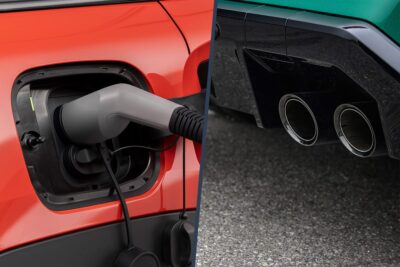
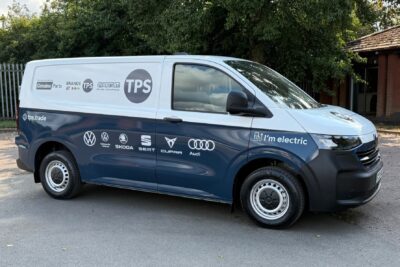

1 Comment